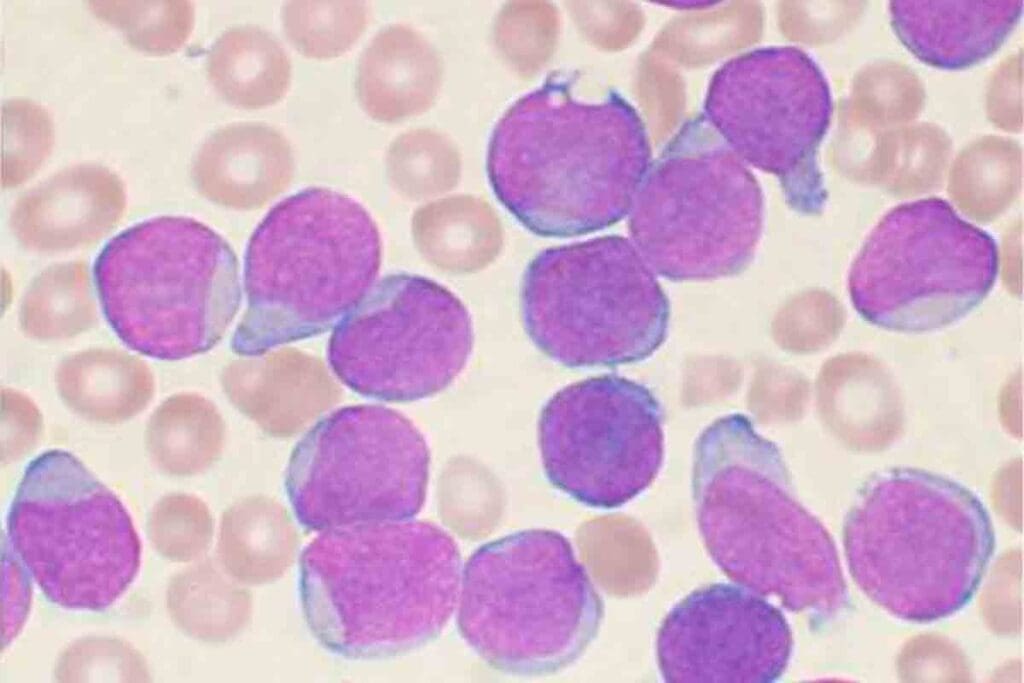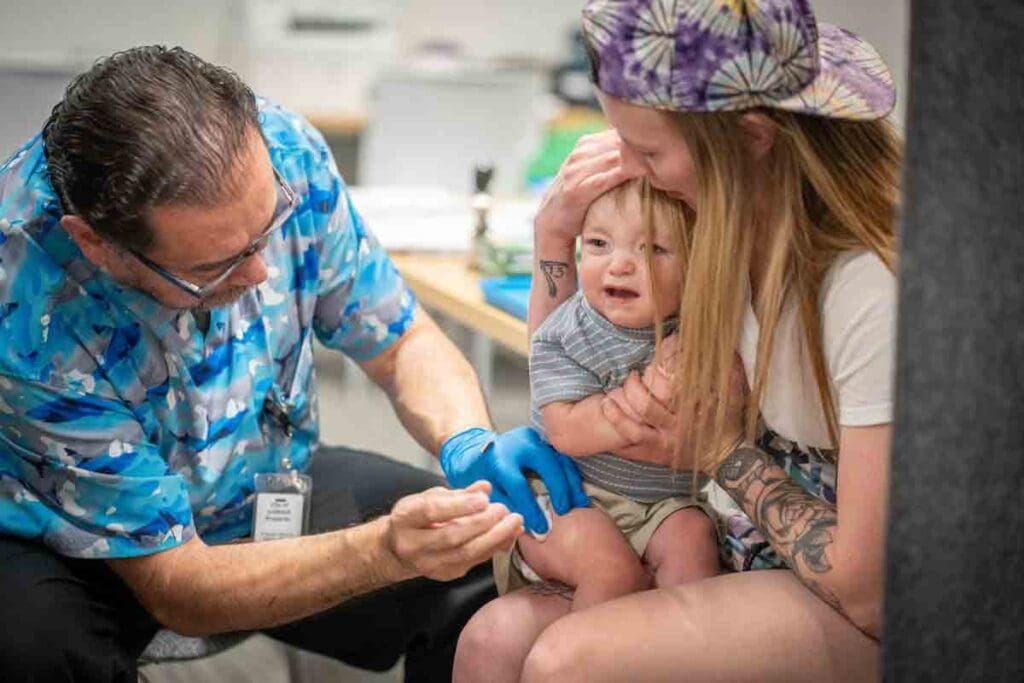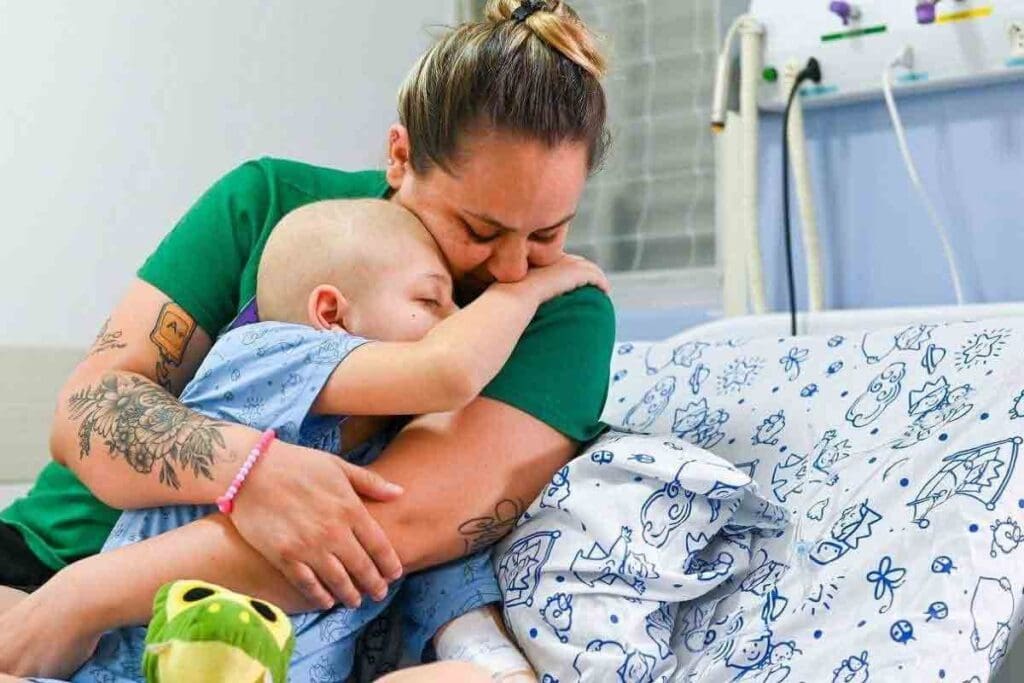Last Updated on November 20, 2025 by Ugurkan Demir

Getting a diagnosis of Acute Myeloid Leukemia (AML) in kids is scary for parents. At LivHospital, we offer top-notch care and support for patients from abroad. AML in childhood makes up 15-20 percent of all leukemia cases in kids. It’s a tough cancer to beat.
The 5-year survival rate for pediatric acute myeloid leukemia is about 65-70 percent. The National Cancer Institute says AML comes from a bone marrow cell turning cancerous. This leads to too many immature cells in the blood. We know it’s hard to understand this complex disease. That’s why we focus on its unique signs, symptoms, and treatments.

It’s important to know the differences between childhood and adult Acute Myeloid Leukemia (AML). At Liv Hospital, we focus on giving each child with AML the care they need. We consider their unique biology and health needs.
AML is when more than 20% of bone marrow or blood cells are abnormal. The World Health Organization has a system to classify AML based on genetics and molecular genetics. Children with AML often have symptoms like fever, pale skin, easy bruising, bleeding, and infections. These symptoms mean they need to see a doctor right away.
AML is a big part of pediatric blood cancers. It’s a tough diagnosis for kids and their families. It’s one of the most common leukemias in kids, after Acute Lymphoblastic Leukemia (ALL). This shows why kids need special care and treatment plans.
Childhood AML has its own genetic and molecular makeup compared to adult AML. These differences help us find the best treatments. Our team at Liv Hospital works hard to give each child personalized care. We use the latest in pediatric oncology.
Childhood AML also has its own set of genetic and molecular changes. These changes affect how well a child might do and how they’ll be treated. Knowing these differences helps us create treatments that can improve survival and quality of life for kids with AML.

We at [Medical Institution] know how vital it is to teach families about childhood AML. Acute Myeloid Leukemia in kids is a tough condition. It needs a deep understanding of its main traits and treatment choices.
Childhood AML makes up about 15-20% of all leukemia in kids. This shows how important AML is in pediatric leukemias. It stresses the need for focused research and treatment plans.
AML is a tough pediatric blood cancer. It’s aggressive and hard to treat. The 5-year survival rate for childhood AML is about 65-70 percent. But, this rate can change based on age and genetic types.
Childhood AML has unique genetic and molecular profiles. These profiles are different from adult AML. They are key in figuring out the prognosis and treatment for each child.
Treatment for AML in kids often includes strong chemotherapy. Sometimes, stem cell transplantation is used for high-risk cases. About 75-80 percent of kids get better after first-line chemotherapy. This shows how good modern treatments are.
Knowing these key facts about childhood AML is vital for parents and caregivers. It helps them understand the disease better. This way, families can support their kids more during diagnosis and treatment.
At Liv Hospital, we emphasize the need to know the signs of acute myeloid leukemia (AML) in kids. The symptoms of AML can look like other illnesses, making it important to get a detailed check-up.
Children with AML might have ongoing fever, look pale, bruise easily, bleed, or get sick often. To diagnose AML, doctors do blood tests, bone marrow checks, and genetic tests. Knowing these signs and how doctors test for them helps improve treatment success rates.
Parents should watch for these signs, even more so if their child has been diagnosed with leukemia before. Catching AML early is key to better treatment and survival chances. Spotting symptoms early means we can start treatment sooner, helping kids with AML live longer.
The survival rate for kids with AML has greatly improved. This is thanks to better treatments and care. At Liv Hospital, we’ve seen a big jump in survival rates because of our detailed and tailored care.
AML in kids has different genes and molecules than in adults. Knowing this helps us find the best treatments. Our team at Liv Hospital is skilled in handling these differences.
Kids with AML might feel tired, look pale, get sick often, bruise easily, or have pain in bones or joints. If your child shows any of these signs, get them to a doctor right away.
Kids with AML usually get strong chemotherapy. Sometimes, they might also need a stem cell transplant. At Liv Hospital, we make treatment plans that fit each child’s needs for the best care.
AML is about 15-20% of all leukemia in kids. It’s a big concern for young patients. Knowing this helps us work on better ways to diagnose and treat it.
Yes, new treatments like targeted and immunotherapies are being researched for AML in kids. At Liv Hospital, we keep up with these new options to give our patients the best care.
Genetic and molecular tests help us understand each child’s AML. This info is key for making treatment plans that work best for them.
Parents play a big role in supporting kids with AML. At Liv Hospital, we offer counseling and help to guide parents through this tough time.
MedlinePlus. (n.d.). Acute myeloid leukemia. U.S. National Library of Medicine. https://medlineplus.gov/ency/article/000184.htm
Subscribe to our e-newsletter to stay informed about the latest innovations in the world of health and exclusive offers!